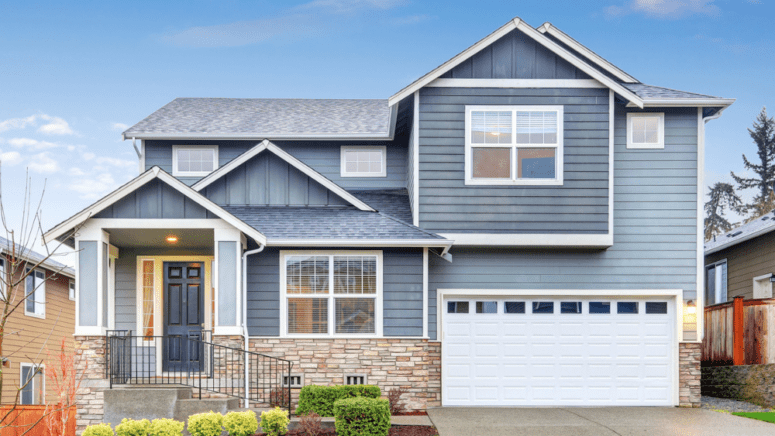How Much Should You Put Down On a House? (It’s Not Always 20%)
- Published on
- 4 min read
-
 Jody Ellis, Contributing AuthorClose
Jody Ellis, Contributing AuthorClose Jody Ellis Contributing Author
Jody Ellis Contributing AuthorJody Ellis is a freelance writer with more than 15 years of experience in the writing industry. Her work includes copywriting and content marketing for real estate professionals, stories covering real estate trends and housing markets, and varied articles on decor and design. In addition to buying and selling several homes herself, she's also owned and managed rental properties, and previously worked in mortgage lending.
-
 Fran Metz, Contributing EditorClose
Fran Metz, Contributing EditorClose Fran Metz Contributing Editor
Fran Metz Contributing EditorFran Metz is a freelance content writer, editor, blogger and traveler based in Las Vegas, Nevada. She has seven years of experience in print journalism, working at newspapers from coast to coast. She has a BA in Mass Communications from Fort Lewis College in Durango, Colorado, and lived in Arvada for 15 years, where she gained her experience with the ever-changing real estate market. In her free time, she enjoys 4-wheeling, fishing, and creating digital art.
Buying a home is one of the biggest investments a person can make in their lifetime. One key question to consider is: How much should you put down on a house? The answer is: It’s not always 20%!
While many people believe a 20% down payment is the standard, there are other options depending on your financial situation and loan type. Understanding your down payment choices can help you better plan for homeownership, ensuring you meet lending requirements, manage your credit, and determine what you can truly afford.
How much should you put down on a house?
While a 20% down payment is often considered the gold standard for buying a home, it’s a substantial sum, especially for first-time buyers. Saving that much can feel like a slow uphill climb, leaving you wondering if homeownership is out of reach. With home values likely to keep rising, it might even seem like you’re being priced out of the market before you get a chance to start.
Fortunately, there are other paths to homeownership. You might be surprised to learn that you can buy a home with as little as 3% to 5% down. In fact, there are good reasons why opting for a lower down payment could be a smarter choice than committing to 20%.
HomeLight looked at the pros and cons of both larger and smaller down payments, interviewing real estate and mortgage professionals, as well as investigating statistics on just how much people are putting down on homes these days, all to help you decide what will work best for you when it comes time to make your home purchase.
One note: During riskier loan environments, such as during a recession, lenders will often protect themselves by increasing the standards required to get a mortgage loan. These increased standards are called mortgage overlays, and they may include bigger down payments, higher credit scores, lower debt-to-income (DTI) ratios, or a combination of these changes.
Average down payments
According to the National Association of Realtors (NAR), down payments for successful homebuyers are at their highest in two decades. For repeat buyers, rising home values have built up equity, enabling them to contribute more toward their next property purchase, with an average down payment of 19% in 2023. In contrast, first-time homebuyers spent an average of 8% on their down payments.
A recent report from Redfin confirms these numbers, showing the average down payment for U.S. homebuyers reached a record $67,500 in June 2024 — an average of 18.6% of the purchase price — marking a 14.8% increase from $58,788 a year prior. This represents the 12th consecutive month of year-over-year growth in the median down payment.
Arizona real estate agent James Rusch-Michener, an 11-year veteran of the industry, says that while 40% to 50% of buyers put 20% down, the rest are divided between a small percentage who pay cash and those who put down anywhere from 3% to 5%.
“It really depends on income levels and what that mortgage payment needs to look like,” he says. “Putting 20 percent down brings a guarantee of a lower payment, and of being able to afford your home forever. But sometimes putting less down can actually make more sense.”
When 20% is the way to go
If 20% down is feasible for you financially, you’ll have the benefit of that immediate equity in your home, as well as being exempt from having to pay mortgage insurance, which most lenders require of buyers unable to put down 20%.
Mortgage insurance, or PMI for private mortgage insurance, protects the lender from potential losses due to default and foreclosure if the borrower can’t make their mortgage payments. Depending on the specifics of your loan, it can add upward of $2,000 a year to mortgage payments.
A larger down payment also means a lower monthly payment and a lower interest rate, which can be a huge savings over the lifetime of the loan. If you’re trying to buy in a competitive market with multiple offers on homes, a 20% down payment also can look very attractive to sellers, as it gives them a stronger sense of your viability as a buyer.
April Wise, former associate product manager with HomeLight’s Buy Before You Sell program, says that in her experience, homebuyers who put down 20% do so primarily to avoid mortgage insurance. “Buyers often don’t want to pay MI,” she says. “It does feel like wasted money to people. And for those who aren’t planning to owner-occupy a property, such as investors, 20% down is required no matter what.”
Wise adds that borrowing a smaller percentage of the home’s value can affect not just interest rates but also things like homeowners insurance. “With a lower loan amount, you’re also more likely to have slightly less expensive homeowners insurance.”
When less is more
Making a large down payment might be considered optimal, but it isn’t always realistic, and sometimes it isn’t even beneficial. “If the home is a fixer — in need of cosmetic or structural improvement — a buyer is better served to put less down so they can put that extra cash back into the property,” Michener says. “You don’t want to invest all your savings into the down payment and be left with no cash to reinvest into the property.”
Michener adds that first-time buyers often can’t afford to purchase a turnkey home, and by making a smaller down payment, they can use that extra money to make improvements, which in turn helps increase the value of their home.
“Unexpected repairs or expenses will always come up,” he says. As a real estate agent, he also makes sure to talk to his buyers about what they can afford and counsels them about not always reaching for the top of their budget. “If they cannot put 20% down, we want to make sure they aren’t going to end up with a payment that is too high,” he says.
Buyers who don’t have a 20% down payment, or don’t want to wipe out their cash reserves, can take advantage of loan programs that allow lower down payments, making it easier to become a homeowner and start building equity right away. “For conventional loans, you can put down as little as 5%,” Wise says. “And if you’re a first-time homebuyer, the minimum is just 3%.” Although those loans do require mortgage insurance, keep in mind that you can refinance the loan once you reach 20% equity, and you’ll be able to drop the PMI at that time.
Wise says there are some options aside from having to pay PMI if you can’t manage a 20% down payment. “There are some programs where you can structure a first and second mortgage,” she says. “There are also jumbo programs, in which you have a loan that exceeds the conforming loan limit, and if you put 10% down, you don’t have to pay PMI.”
Wise also points out that “first-time homebuyer” doesn’t necessarily mean someone who has never owned a home.
“In regards to the criteria for loan programs, a first-time homebuyer is someone who hasn’t bought or sold a home in the last three years,” she says. “Buyers should also always look into local community programs that are offered for first-time buyers, as they can vary from state to state.”
The best option for you as a buyer
When trying to decide how much of a down payment is best for you, talking to experts like your real estate agent or mortgage lender can help you determine what you can afford, what loan program to use, and exactly how much of a down payment to make.
“It’s all a bit of a balancing act,” Wise says. “And we have to look at what we call ‘layered’ risk.” If you’re stretching your finances to the limit, putting every dollar into the down payment while carrying other debt, it might be wiser to make a smaller down payment or wait until you’ve saved more, she says.
Michener says it’s important for buyers to really look at their income levels and understand what they can afford, and to get creative with their lender in regards to determining the optimum down payment and loan. Buyers should also keep in mind that changes in the market can affect their buying power, both positively and negatively.
“If we have another market crash, banks hold onto their money more and aren’t as willing to lend to people who have lower credit scores or lesser down payment,” he says. “Interest rates are likely to be higher, and lenders aren’t going to give loans as freely.”
While saving and making sure you’re in a good financial position to buy is important, not having a 20% down payment doesn’t have to be a deal-breaker. With a little help from seasoned professionals, you could become a homeowner sooner than you think. Rather than giving money to a landlord every month, you can own a home and start building equity in your investment right away.
“When you buy, you have security,” Michener says. “You aren’t at the mercy of a landlord, and, in the long run, it will only benefit you and your family.”
Header Image Source: (iriana88w/ Depositphotos)



